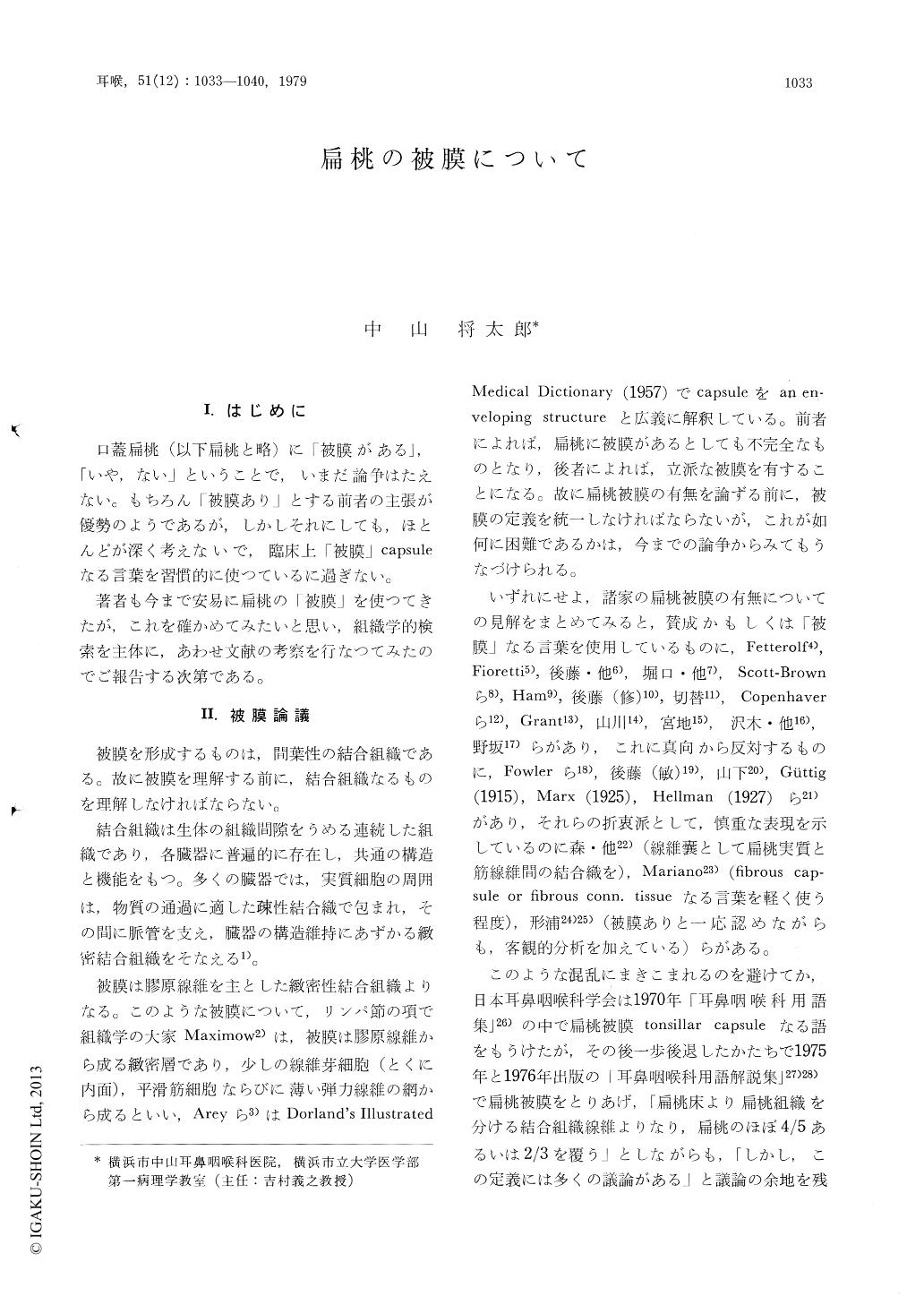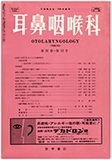Japanese
English
- 有料閲覧
- Abstract 文献概要
- 1ページ目 Look Inside
I.はじめに
口蓋扁桃(以下扁桃と略)に「被膜がある」,「いや,ない」ということで,いまだ論争はたえない。もちろん「被膜あり」とする前者の主張が優勢のようであるが,しかしそれにしても,ほとんどが深く考えないで,臨床上「被膜」capsuleなる言葉を習慣的に使つているに過ぎない。
著者も今まで安易に扁桃の「被膜」を使つてきたが,これを確かめてみたいと思い,組織学的検索を主体に,あわせ文献の考察を行なつてみたのでご報告する次第である。
Regarding the presence or abscence of tonsillar capsule, arguernents are still persisting, but fromseveral points of view, I believe the presence of the capsule.
The reasons for its presence were as follows : 1) There is a thin layer of rather dense connective tissue beneath pharyngeal mucosa, with which the connective tissue layer consisting the so-called capsule undermines beneath the free surface of palatine tonsil. Therefore, the whole tonsillar tissue is enveloped with those surrounding connective tissues like as the lymph nodes. 2) Tonsil is known to be a physiological inflammatory organ, so the effect of inflammation contributed greately to the formation of the so-called capsule, namely from loose to dense connective tissues surrounding tonsillar lymphatic tissue. 3) The clinical use of a term "capsule" is quite reasonable in another meaning, if one dose not misuse it with those of kidney or spleen. 4) Practically it is impossible to remove tonsil without taking the capsule with it. 5) From several methods of staining, capsule is known to be consisted from collagen fibers, elastic fibers and reticular fibers, besides the whole fibrous layer is differentiated from the outer or surrounding loose connective tissue (mostely of collagen fibers) and muscular fibers histologically.

Copyright © 1979, Igaku-Shoin Ltd. All rights reserved.


